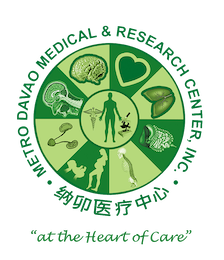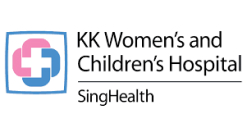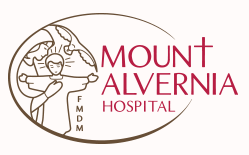
Textured layer goes on top

Smooth layer goes on the bottom

May use up to 3-4 days if remains unsoiled and dry
Hospital AcquiredInfections (HAI), alsoknown as NosocomialInfections
a common occurrence that either prolongs the stay of the patient in a hospital or endangers his medical condition — which can be fatal.
There are 2 main causes of HAI
-
Human Transmission
from caretakers, visitors, medical staff, or;
-
Material Transmission
through medical instruments, vents, and hospital linens which include gowns, vests, towels, bed sheets, pillowcases and blankets.
Actual Cases of HAI from Hospital Bed Sheets
An investigation into two cases of post-operative Bacillus cereus meningitis [1,2] revealed that hospital linen laundered by a batch continuous washing machine was heavily contaminated by Bacillus cereus spores. It was found that the linen introduced into the washing machine had a high Bacillus cereus spore content and that this was still present after the wash process.
(1. Barrie D., Hoffman P.N., Wilson J.A., Kramer J.M. Contamination of hospital linen by Bacillus cereus. Epidemiol. Infect. 1994;113:297–306. doi: 10.1017/S0950268800051724. [PMC free article] [PubMed] [CrossRef] [Google Scholar] 2. Barrie D., Wilson J.A., Hoffman P.N., Kramer J.M. Bacillus cereus meningitis in two neurosurgical patients: An investigation into the source of the organism. J. Infect. 1992;25:291–297. doi: 10.1016/0163-4453(92)91579-Z. [PubMed] [CrossRef] [Google Scholar])
Hygienic Benefits
- Prevents bio-organisms from penetrating into the pillow or mattress.
- Protects pillow and mattress from being contaminated with bodily fluid secretions such as saliva, pus, blood, etc.
- Prevents cross-contamination of dust mites and germs between different users of the same mattress and/or pillows.
- Ensures new and clean surface for every user.
Favorway Disposable
Bed Sheets & Pillowcases
- Clean/Immediately replaceable
- Does not stain mattress and pillows
- Packed and ready-to-use
- Zero laundry cost
- Occupies small space
- Needs little manpower
- Zero water and electricity costs
Why Favorway?
Favorway disposable pillowcases and bedsheets are made from high-quality, hygienic and non-woven materials to ensure patient’s safety and prevent hospital acquired infection (HAI) in hospital beddings and linens.
It has a unique and patented two-layer system. The top layer absorbs liquid spills while the bottom layer prevents it from leaking or penetrating into the underlying material (e.g. mattress or pillow).
International Partners
Favorway has been used by different hospitals in many countries in Asia, Australia and Europe for more than 10 years. Among our most valued clients are:
Product Comparison
| FACTORS | FAVORWAY | LINENS | OTHER DISPOSABLE |
|---|---|---|---|
| Hygiene Level | High | Fair | Fair |
| Comfort | High | High | Low |
| Cross Contamination | High | Low | Fair |
| Mattress Protection | High | Low | Fair |
| Storage Savings | High | Low | High |
| Labor Savings | High | Low | High |
Favorway’s Unique 2 Layer System
Top layer absorbs the fluids to prevent spills.
Bottom layer is impermeable to prevent fluid leakage to the mattress or pillow.

In the investigation of a Bacillus cereus bacteremia outbreak [3] it was found that hospital linens and the washing machine were highly contaminated with B. cereus, which was also isolated from the intravenous fluid of symptomatic patients.
(3. Sasahara T., Hayashi S., Morisawa Y., Sakihama T., Yoshimura A., Hirai Y. Bacillus cereus bacteremia outbreak due to contaminated hospital linens. Eur. J. Clin. Microbiol. Infect. Dis. 2011;30:219–226. doi: 10.1007/s10096-010-1072-2. [PubMed] [CrossRef] [Google Scholar])
Surviving Microorganisms after Laundry
The following table summarizes the findings from different studies showing surviving microorganisms from various laundering conditions:

| DESCRIBED ADDED DISINFECTION SURVIVING LAUNDERING AGENT OR BLEACH MICRO-ORGANISM REFERENCE CONDITIONS | ADDED DISINFECTION AGENT OR BLEACH |
SURVIVING MICRO-ORGANISM | REFERENCE |
|---|---|---|---|
| 10 mins @ 60°C | No | Enterococcus faecium | Wilcox & Jones, 1995 [10] |
| 10mins @ 60°C or 3 min at 71°C | No | Certain strains of Enterococcus faecalis and Enterococcus faecium |
Orr et al. 2002 [11] |
| Less than 10mins @ 60°C | 3 ml Peroxyacetic acid / kg textiles |
Enterococcus faecium, Staphylococcus aureus |
Fijan et al. 2007 [12] |
| Less than 10mins @ 60°C | 3 ml Peroxyacetic acid / kg textiles |
Enterococcus faecium, Staphylococcus aureus, Pseudomonas aeruginosa and Enterobacter aerogenes |
Fijan et al. 2007 [12] |
| 20 mins @ 30°C | 10 ml Sodium hypochlorate / kg textiles or 12.5 ml peroxyacetic acid / kg textiles |
Enterococcus faecium, Staphylococcus aureus |
Fijan et al. 2010 [13] |
| 43mins @ 30°C | 10 ml Sodium hypochlorate / kg textiles |
Enterococcus faecium | Altenbaher B., Šostar-Turk S., Fijan S [14] |
| 13mins @ 49°C | Added chlorine bleach (without specifications) |
Staphylococcus aureus and Klebsiella pneumoniae |
Walter et al. 1975 [15] |
| 66°C | Added chlorine bleach cycle (without specifications) |
Staphylococci, Klebsiella, and Enterobacter species |
Smith et al. 1987 [16] |
|
8mins @ 47.8°C 77.2°C |
0.58 Chlorine bleach / kg 0.11 Chlorine bleach/kg |
Predominantly aerobic bacteria, staphylococci and total coliforms |
Christian et al. 1983 [17] |
|
22.2°C 71.1°C |
Low temperature bleach
High temperature bleach |
Predominantly Enterobacteriaceae, Pseudomonadaceae and Staphylococcus species |
Blaser et al. 1984 [7] |
| Typical program for hospital bed linen |
50 ppm Chlorine, 54 ppm peracid, 100 ppm peroxid |
Clostridium difficile spores | Hellickson & Owens 2007 |
4. Wilcox M.H., Jones B.L. Enterococci and hospital laundry. Lancet. 1995;345:594. doi: 10.1016/S0140-6736(95)90507-3. [PubMed] [CrossRef] [Google Scholar] 5. Orr K.E., Holliday M.G., Jones A.L., Robson I., Perry J.D. Survival of enterococci during hospital laundry processing. J. Hosp. Infect. 2002;50:133–139. doi: 10.1053/jhin.2001.1137. [PubMed] [CrossRef] [Google Scholar] 6. Fijan S., Koren S., Cencič A., Šostar-Turk S. Antimicrobial disinfection effect of a laundering procedure for hospital textiles against various indicator bacteria and fungi using different substrates for simulating human excrements. Diagn. Microbiol. Infect. Dis. 2007;57:251–257. doi: 10.1016/j.diagmicrobio.2006.08.020. [PubMed] [CrossRef] [Google Scholar] 7. Fijan S., Šostar-Turk S. Antimicrobial activity of selected disinfectants used in a low temperature laundering procedure for textiles. Fibres Textiles East Eur. 2010;18:89–92. [Google Scholar] 8. Altenbaher B., Šostar-Turk S., Fijan S. Ecological parameters and disinfection effect of low-temperature laundering in hospitals in Slovenia. J. Clean. Prod. 2011;19:253–258. doi: 10.1016/j.jclepro.2010.10.002. [CrossRef] [Google Scholar] 9. Walter W.G., Schillinger J.E. Bacterial survival in laundered fabrics. Appl. Microbiol. 1975;29:368–373. [PMC free article] [PubMed] [Google Scholar] 10. Smith J.A., Neil K.R., Davidson C.G., Davidson R.W. Effect of water temperature on bacterial killing in laundry. Infect. Control. 1987;8:204–209. [PubMed] [Google Scholar] 11. Christian R.R., Manchester J.T., Mellor M.T. Bacteriological quality of fabrics washed at lower-than-standard temperatures in a hospital laundry facility. Appl. Environ. Microbiol. 1983;45:591–597. [PMC free article] [PubMed] [Google Scholar 12. Blaser M.J., Smith P.F., Cody H.J., Wang W.-L.L., LaForce F.M. Killing of fabric-associated bacteria in hospital laundry by low-temperature washing. J. Infect. Dis. 1984;149:48–57. doi: 10.1093/infdis/149.1.48. [PubMed] [CrossRef] [Google Scholar] 13. Hellickson L.A., Owens K.L. Cross-contamination of Clostridium difficile spores on bed linen during laundering. Amer. J. Infect. Control. 2007;35:E32–E33. doi: 10.1016/j.ajic.2007.04.025. [CrossRef] [Google Scholar]

































